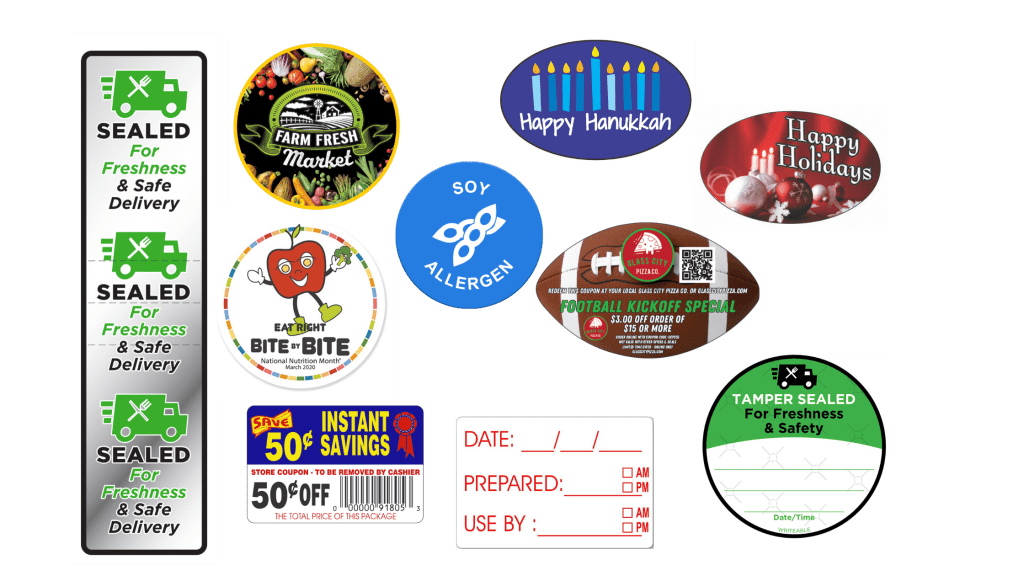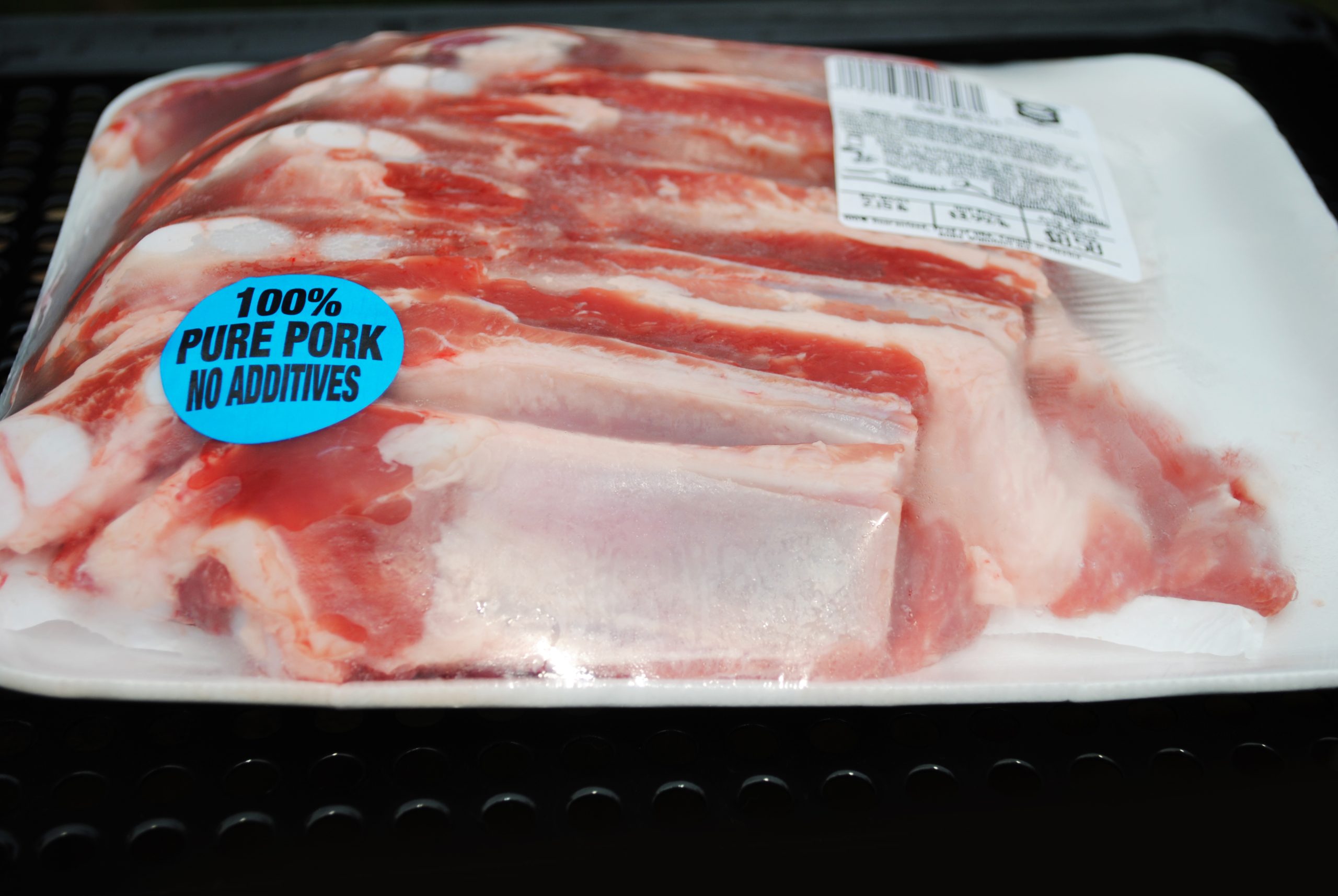You’re probably familiar with sell-by-date labels and nutritional labels, but did you know that it doesn’t stop there?
There are many different types of labels, each with its own importance. For food manufacturers, food distributors, and any other business that sells food products, it’s important to make sure you’re using the best label.
It can be tricky to navigate the wide world of food labels. That’s why, today, we’re going to go over everything you need to know about food labels, from what is a food label and why food labels are important, to defining each type as well as providing specific use cases.
What is Food Label and Why is it Important?
Before we take a look at different food label examples, it’s important to understand both what a food label is and the purpose food labels serve.
What is a Food Label?
A food label, as defined by the United Nations Food and Agriculture Organization, is any tag, brand, mark, pictorial, or other descriptive matter, written, printed, stenciled, marked, embossed, or impressed on, or attached to, a container of food or food product.

Food labels help provide consumers with identification, information, and instruction. For example, a food label can help a consumer identify ingredients, allergens, and additives.
Common questions that food labels answer for consumers:
- What are the ingredients?
- Does this contain allergens?
- How many additives does this contain?
- How many calories are in this?
- How long will this last on my shelf?
- Should I refrigerate this after opening?
- What’s the best way to prepare this?
- What’s the best way to store this?
Why are Food Labels Important? 3 Key Benefits
To understand why food labels are important, consider the purpose a food label serves.
Food labels have three main purposes:
- Help Consumers Make Healthy Food Choices
- Reduce Food Waste
- Prevent Fraud
Help Consumers Make Healthy Food Choices
For years, there has been a steady increase in the prevalence of diet-related non-communicable diseases, such as diabetes, hypertension, and heart disease. Food labels help consumers understand the nutritional value and ingredients of their food, allowing them to make healthier, informed choices about what they eat.
Reduce Food Waste
Date labels like best by, use by and sell by labels help advise foodservice providers and operators of the appropriate shelf life for a given food product. This is also where understanding the different types of food labels is important, as people often confuse labels like “best before date” and “use by date.” As a result, food is thrown out before it’s gone bad.
Prevent Fraud
Food labels are also useful for preventing fraud, as food sellers can’t deliberately mislead consumers through false advertisements like saying a food item has fewer calories in each serving than it really does. Preventing food fraud is one of the primary focuses of labeling policy.
Different Types of Labels in Food Packaging
There are many, many different types of food labels, each with a unique purpose. Some, like nutritional labels, you’re familiar with. Others, like the geographical indication label, you may be less familiar with.
Let’s look at some examples of different types of labels in food packaging.
Food Label Examples
This article will cover 6 types of labels:
- Nutritional
- Geographical Indication
- Sell-by, Best-by, and Use-by
- Scale
- Tamper Evident
- Customizable
Nutritional Labels

Nutritional labels make it easy to understand the nutritional values and ingredients in any given food item, such as allergens, allowing the consumer to compare products. For example, one brand may have more sugar content per serving than another brand of the same product.
The label also provides a breakdown of the number of calories, carbs, fat, fiber, protein, and vitamins per serving of the food product.
Geographical Indication Labels
Geographical indication labels, or GI labels for short, are an example of a legal tool used to link food products with their place of origin.
The purpose of a GI label is to provide social, economic, and environmental value to a food product’s region of descent. As such, GI labels are only given to products that meet unique guidelines for specific attributes, qualities, or reputations stemming from their origin location.
One example of GI labels helping to provide economic value can be found in Cameroon’s Penja Valley. After the Penja pepper become the first African product to receive a GI label, the income of local farms increased to six times their pre-GI label income.
Best-By, Sell-By, and Use-By Labels

Date labels are some of the most frequently misinterpreted and misunderstood labels in the foodservice industry.
The purpose of best-by, sell-by, and use-by labels is to inform both the seller and consumer about the shelf life and optimal quality of a product. Essentially, these labels tell people when the flavor and texture of a food product begin to significantly deteriorate.
To prevent any confusion, here’s a breakdown of the most popular date labels, sell-by, best-by, and use-by.
Best-By Date
This shows the last date recommended to use the product for optimal flavor and quality.
Sell-By Date
This shows the last date a seller should display the product on their shelves for purchase.
Use-By Date
This shows the last date recommended to use the product for peak freshness; this date is important for highly perishable products like fresh meats, milk, poultry, and salad blends.
Scale Labels
Scale labels are used to indicate food weight, price by weight, and other weight-related information.
You may be familiar with scale labels from the deli counter or produce section of your local supermarket, as these labels are often used for products that don’t come in uniform packaging.
Tamper-Evident Labels

A tamper-evident label is a type of label that’s designed to reveal whether a product has been opened or interfered with in any way.
Tamper-evident labels have become very popular recently, these labels are designed to make the consumer aware if their food has been tampered with while in transit. They’ve also been valuable for grocery stores and supermarkets as a measure against preventing pilfering. You might see tamper-evident labels on grocery store shelves, or takeout and delivery bags.
These labels are useful for both in-house and third-party delivery systems, as they will ensure that the food remains untouched until it arrives at its destination.
Customizable Labels

Customizable labels provide an additional avenue for businesses to advertise. The label can portray a logo, slogan, or really anything to spread brand awareness.
A major benefit of using a customizable label is that it can be useful for conveying product-specific info. For example, the label may indicate size (small, medium, large), or whether a food product is organic. it
Final Thoughts
Every food label serves a purpose, whether that purpose is to identify, inform, or instruct, it’s meant to help consumers and foodservice providers alike.
Labels help make things less confusing for consumers and distributors alike once they’re able to differentiate the various types of labels and their unique purposes.
If you still have questions regarding food labels or need help selecting the best for your businesses food products, reach out to an Imperial Dade facility near you. You can set up a free consultation with one of our foodservice experts, and they’ll be happy to address any questions or concerns you still have about food labels.
